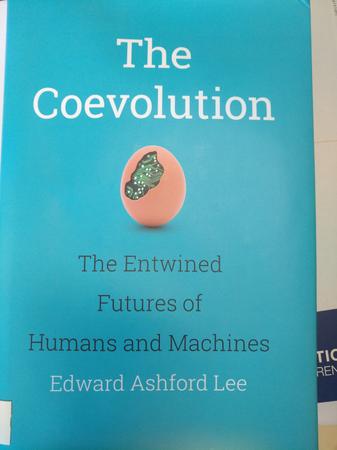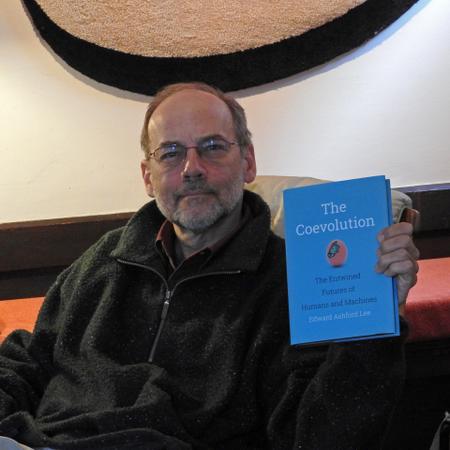Books - Read and Enjoyed
The Coevolution
The Entwined Futures of Humans and Machines
MIT Press, 2020
Edward Ashford Lee

Edward Lee’s view on the emergence of a superintelligent AI and humanity’s fate is more relaxed than Barrat’s or Bostrom’s. He posits that human culture will evolve absorbing new technology such as AI and adapting to it. Likewise, the AIs that will develop and emerge, will adapt and integrate into a symbiosis with humans. He expects a strong mutual dependence:
Our relationship with machines may be becoming stronger, what biologists call an obligate symbiosis, where neither can live without the other.
(page 12)
Lee suggests to apply the metaphor of living beings to the digital gadgets, intelligent or otherwise, and proposes the term “eldebees” from LDB, short for Living Digital Beings. His intention is not a discussion of what life is and what qualifies as a life form, but to paint a picture of an ecosphere within which both humans and machines act, interact and evolve. This picture implies that humans do not have full control over which machines emerge and where evolution is heading. It is more an evolutionary process where many machines are developed, exist for a limited period, and die. Lee quotes Tay as one example:
On March 23, 2016, Microsoft released a chatbot called Tay, an AI designed to interact with users on social media such as Twitter using the vernacular of hip youngsters using the media. Tay was designed to learn on the fly, and unfortunately, she did that very well. Tay was quickly trained by (probably malicious) humans, through Twitter, to write vulgar and racist tweets. According to James Vincent, 27 in an emailed statement given to Business Insider, Microsoft said, “The AI chatbot Tay is a machine learning project, designed for human engagement. As it learns, some of its responses are inappropriate and indicative of the types of interactions some people are having with it. We’ re making some adjustments to Tay.” Microsoft euthanized Tay.
(page 188)
Only successful machines survive and success is measured in terms of utility to other beings in this joint ecosphere of humans and machines.
Not only machines are subject to the evolutionary pressure, humans are as well. But it is human culture that keeps evolving, not the genome, since the latter’s evolutionary cycle is much too long.
In the book Lee explores some key properties that machines may or may not acquire, in particular consciousness, free will, accountability, human and non-human forms of intelligence. Similarly prominent are the modes of interaction like feedback loops between humans and machines and among machines, and explainability and causality of machine actions. In particular the chapters on free will, consciousness and accountability give an excellent overview of the state of discussion and it is specifically interesting to reconsider these age old questions in the light of emerging AI.

There is a skeptical undertone regarding what AI can achieve and how fast. And that really seems a crucial point which is not illuminated as much as it should. How fast will AI develop? And can cultural evolution keep pace with adapting to it and controlling it? While Barrat and Bostrom make the assumption that an intelligence explosion is likely or even inevitable, there is no such assumption or even discussion by Lee. The book gives the impression of a relatively slow evolutionary process the pace of which is defined by how fast human culture can evolve.
(AJ September 2021)
